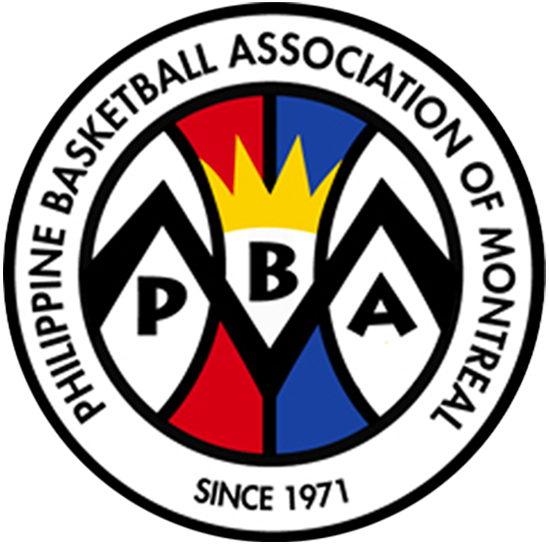‘In our blood’: Basketball and Montreal’s Filipino community
How the sport has helped unite Filipinos in Côte-des-Neiges
By Jesse Feith, Angela MacKenzie, for CBC News

One PBAM member looks on as his team plays a game at West Hill Gymnasium. (Jesse Feith/Concordia Journalism)
When Jake Maguigad and Robert De Guzman moved to Côte-des-Neiges six months apart in 1969, they wanted to connect the Filipino community through a shared passion from back home: basketball.
The only problem was, they could only find nine Filipinos in the area who could play — one short of what was needed for a game.
“We had to befriend a Spaniard to make it 10,” Maguigad says with a laugh. “We gave him an honorary spot in our league.”
Today, more than 60 per cent of all Filipinos living in Montreal call Côte-des-Neiges their home, making the neighbourhood a hub for Filipino businesses, families and community organizations.
The basketball league— now known as the Philippine Basketball Association of Montreal (PBAM)— encompasses more than 65 teams throughout its different divisions, bringing together more than 800 people from the Filipino community each weekend.
Basketball roots
Ask anyone involved in the PBAM, and they’ll say basketball was a natural way to unite Filipinos in Côte-des-Neiges.
“Every Filipino loves basketball,” Maguigad says. “It’s in our blood.”
“If you walk in the Philippines, every corner you’ll see a basketball board hanging on the coconut trees,” De Guzman says.
“There’s always a ring and a piece of wood.”
For today’s younger players, it’s just something that came naturally.
“For me, it’s like a family thing,” 17-year-old Mark Angelo Almonte says.
“I started off when I was small, I always watched my parents play. Even my mom was out there shooting with my dad.”
Mobile users: Watch the video here
As word spread about the league in the 1970s and 80s, it grew bigger and bigger. By the mid-80s, however, the Filipino community started facing some tough challenges, and so did the league.
Tumultuous times
There was a period in the 1980s when PBAM organizers strongly considered shutting down the league.
With an influx of Filipinos settling in Montreal, a divide began to take shape between immigrant Filipinos and those who were Canadian-born.
It was a clash of cultures that was felt both on the PBAM courts and on the streets of the neighbourhood, where rival gangs were growing in numbers.
“The kids coming from the Philippines were having trouble with the kids who grew up and were born here. It was like two solitudes,” says Maguigad.
Teams in the league were starting to be divvied up based solely on where players were born, elevating the in-game intensity.
“There were fights among the players on the teams. The championship one time wasn’t even finished, because three minutes into the game, there was a scuffle, a fight and the referee had to leave,” he says.
“The Filipinos who freshly arrive here, they’re kind of wild. But the ones that were born here are more refined, there was a clash,” says De Guzman.
Through the league, the organizers tried to help newly-arrived immigrants adapt to their new surroundings.
When games would take place late at night, both men would wait outside the gyms, where one group would be waiting for the other to emerge.
De Guzman started receiving calls from Station 20 in Côte-des-Neiges when police officers brought in Filipino youth for misconduct. Often, the youth were found with weapons from back home, like arrows and jungle bolos.
“The policemen were wondering why these kids were carrying these,” he says.
“I had to explain to them that in the Philippines, it’s survival of the fittest. I would go there just to make sure that their human rights weren’t being violated, that they were OK. Then I would call the parents and explain why they are there and the consequences.”
He became an important link between the neighbourhood’s young Filipinos and local police.
“That was part of the PBAM,” he says.
A community united
In the mid-90s, Maguigad decided to focus the league solely on the youth divisions, forcing out many of the older players that had turned it into a place to hash out rivalries, rather than a way of connecting the community.
A PBAM player is congratulated by team-mates at the West Hill Gymnasium. (Jesse Feith/ Concordia Journalism)
It was an ambitious gamble, but he says he knew that, with time, everyone would understand what the PBAM was trying to do by grandfathering out the tension underlining a lot of the league games.
“At first the guys who were shut out were at my neck,” he says. “They didn’t realize that what we were doing was for the good of everybody.”
“I told them, just wait,” he says.
“What Jake did was try to swing the pendulum, decrease the problems we were having in the older divisions, and start doing it more for the community, as a service for the younger kids,” current PBAM president Rick Aquino says.
Within a few years, the association was brought back to what it was first intended to be: a gathering point for Filipinos who could connect over a shared passion of a game from back home.
On weekends today, the whole community comes together through the PBAM. The older divisions take the court in the morning before making way for the younger players in the afternoons. Parents often watch from the sidelines as grandmothers serve Filipino dishes just outside.
For Maguigad, however, the association’s true success is on display outside the lines of the basketball court.
“There’s more kinship now, because of basketball,” he says.
“That’s what I treasure. We did a lot. We did a lot to integrate the Canadian-born and the Filipino-born. The divide is good now. We did a lot to bridge that gap.”




Search
RECENT NEWS
Follow us on Facebook
Follow us on Twitter